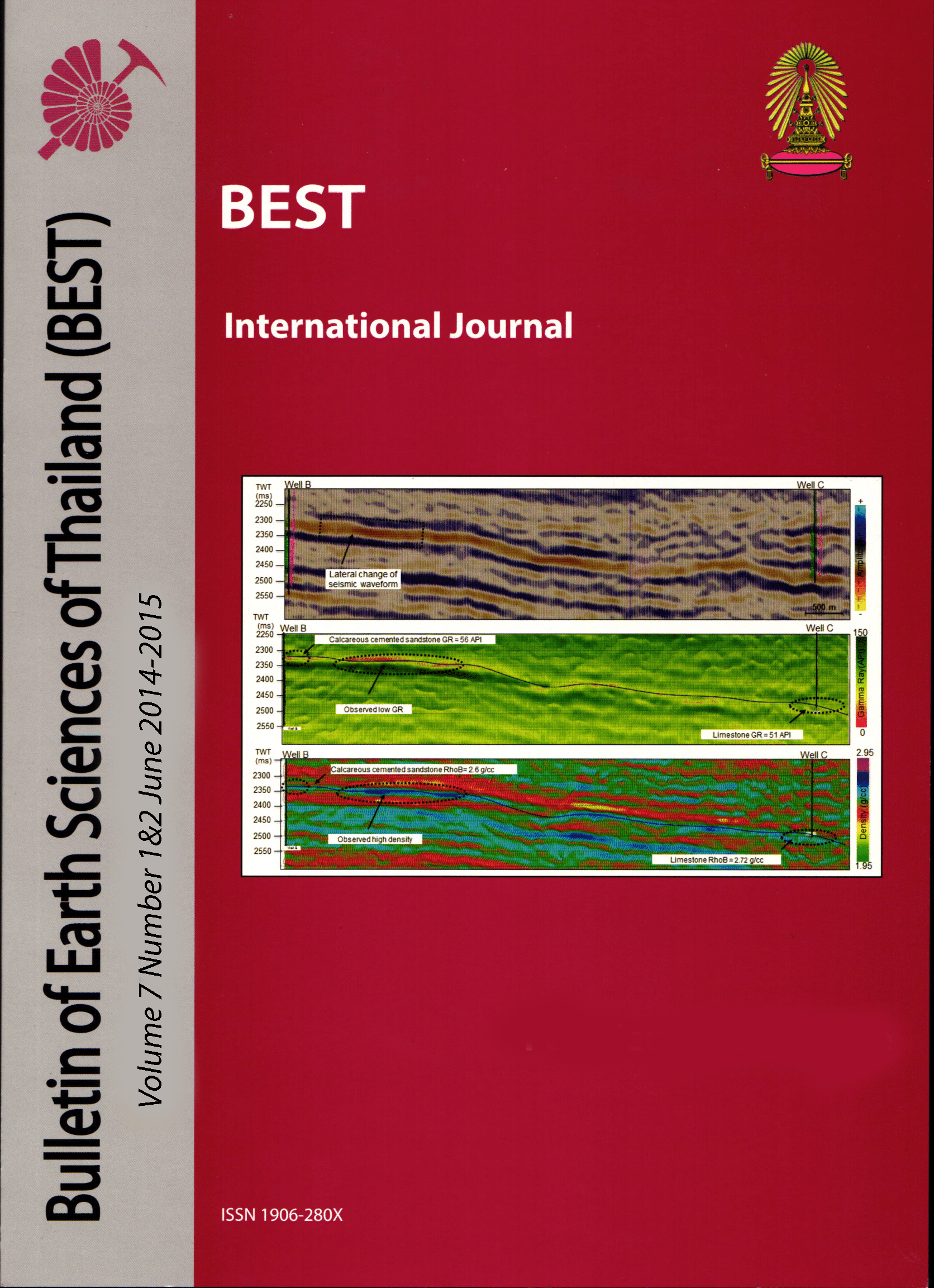Seismic Geomorphology and Depositional Environment from Upper Miocene to Recent in the Pattani Basin, Gulf of Thailand.
Main Article Content
Abstract
Integration of 3D seismic and well data reveals excellent fluvial geomorphology in the uppermost 900ms interval in the Pattani basin, Gulf of Thailand. Seismic attribute analysis technique was adopted to establish depositional environment from Upper Miocene to Recent succession. RMS, sweetness, semblance and spectral decomposition attributes are analyzed over forty key horizons. Spectral decomposition and sweetness exhibited better image as opposed to RMS image in all interval. Well log correlation of attributes and lithology show that sand gives high sweetness and high amplitude response, whereas, low sweetness and low amplitude is associated with shale. Based on fluvial styles the whole study interval is divided into five periods. Period 1 is characterized by moderate to high sinuous fluvial systems in the lower part. Backfilled sandy channels and low sinuosity systems are characterized in the upper part of the interval indicating a transgressive period. High to moderate sinuous systems with well developed meander belts are found in Period 2. Period 3 comprised of wide and low sinuosity channels associated with widespread coal deposition in an estuarine environment. Continuous, low amplitude and transparent reflection package exemplify Period 4 and indicate a marine deposition. Period 5 is dominated by broad, high sinuosity fluvial systems resting within incised valley with occasional unincised fluvial systems. Such wide variation in the fluvial styles serves as a warning towards a rather simplified assumption of fluvial styles and dimensions during reservoir modeling.
Article Details

This work is licensed under a Creative Commons Attribution-NonCommercial-NoDerivatives 4.0 International License.
Copyright © 2008 Department of Geology, Faculty of Science, Chulalongkorn University. Parts of an article can be photocopied or reproduced without prior written permission from the author(s), but due acknowledgments should be stated or cited accordingly.
References
Davies,R.J., Posamentier,H.W., Wood,L.J., & Cartwright,J.A. (2007). Seismic Geomorphology: Applications to Hydrocarbon Exploration and Production. Geological Society of London, Special Publication, 277, 1-14. doi:0305-8719/07/$15.00
Fielding,C.R. (1987). Coal depositional models for deltaic and alluvial plain sequences. Geology, 15, 661-664.
Miall,A.D. (2002). Architecture and sequence stratigraphy of Pleistocene fluvial systems in the Malay Basin, based on seismic time slice analysis. AAPG BULLETIN, 86(7), 1201-1216.
Posamentier, H.W (2001). Lowstand alluvial bypass system - Incised Vs Unincised, AAPG BULLETIN, 85(10), 1777-1793.
Reijenstein,H.M., Posamentier,H.W., & Bhattacharya, J. P. (2011). Seismic geomorphology and high resolution seismic stratigraphy of inner shelf, fluvial, estuarine, deltaic and marine sequences, Gulf of Thailand. AAPG BULLETIN, 95(11), 1959-1990. doi:10.1306/03151110134
Zeng, H., 2013, Stratal slice The next generation: The Leading Edge, v. 32, p. 140-144


